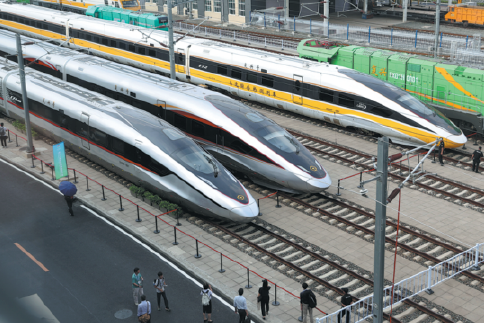China rises from SEZs to global economic anchor


Moving quickly to implement the policies announced by President Xi Jinping in his Oct 14 speech celebrating the 40th anniversary of the creation of the Shenzhen Special Economic Zone, the National Development and Reform Commission announced on Oct 18 a series of reforms opening up artificial intelligence-based businesses and financial markets.
Intellectual property protection, economic and business legislation, and talent attraction will be strengthened and further marketized.
After the ceremony, Xi laid a wreath on Deng Xiaoping's statue to commemorate Deng's policy of reform and opening-up. This strongly symbolized China's steadfast intention to continue opening up its economy to foreign investment and competition and pushing market-based reform.
Recognizing in the 1980s that China needed to be flexible and adaptive, Deng famously said that the nation needed to experiment with many policies-"crossing the river by feeling for stones". Now, China is implementing much more detailed and planned-out market-based reforms than those early steps.
Shenzhen continues to be a prototype and arena for experimenting with policies that might later be implemented throughout the country. With the approval of the establishment of SEZ by China's national legislature on Aug 26, 1980, the impoverished fishing village has been transformed into a modern metropolis over the past four decades.
In the next four decades it will be further transformed into an example of a very livable "people-centered" city that also is on the leading edge of technology and manufacturing.
Economic opening-up in China takes pilot cities as the starting point and has upgraded the entire country's economy incrementally based on the experiences of the first four SEZs and the opening-up of cities along the coastal areas, including the establishment of the Pudong New Area in Shanghai and 21 pilot free trade zones. The recent announcement of the Hainan pilot free trade port is another bold step in reform and opening-up.
In this turbulent period, the COVID-19 pandemic has accelerated rising protectionism and unilateralism in economic globalization, which curtails international trade and investment dramatically. Innovations of science and technology have undergone profound adjustments. Some countries are limiting investment and attempting to stop the spread of technology.
But, given all the hindrances, Xi highlighted in his 50-minute speech the new "dual circulation" development pattern is not a "closed domestic cycle", making it clear he wants a "new open economic system".
The high-level confirmation of the further opening-up of China also partly supports the narrative that China's success is built on Shenzhen. This hybrid of the East and West borrowed Hong Kong's development model to a large extent.
Xi wants to seize the chance to show China is still an attractive place for foreign investors as the country's new "dual circulation" strategy has been widely known to the public.
In the context of stagnant domestic and international markets and recessing global economic and trade, cultivating domestic demand and giving full play to the domestic consumption of economic development is the key move to gear up China's economy.
As the world's second-largest economy, the country has a huge domestic demand potential with 1.4 billion people, 1 billion smartphone users and a middle-income group of 400 million. China's digital economy stimulates new domestic consumption demand such as 5G network construction along with the two-thirds of the world's high-speed rail transportation.
- Clear signal that nation holds steady?to course of reform and rejuvenation: China Daily editorial
- Shenzhen campus model can be a guide for followers
- Macao to learn innovation development from Shenzhen's experience: scholar
- Shenzhen a successful symbol of China's reform, opening-up, says Argentine academic
- Bay Area a big attraction for foreign capital, talent




































